One of Marlene Dietrich’s most prized jewels will be auctioned at Christie’s online sale, The Magnificent Jewels of Anne Eisenhower, which ends on June 7th. Described by its maker Van Cleef and Arpels as an “audacious piece”, the bracelet was purchased by the German-American actor in 1937 and is fashioned of round and baguette cut diamonds surrounded by a disc of cushion-cut rubies.
The piece takes its name, Jarretière, from the French word for garter. The Blonde Venus actor wore it for Alfred Hitchcock’s 1950s film Stage Fright and the 1951 Academy Awards ceremony. It was acquired by Eisenhower in 1992 and is listed at $2.5 million – $4.5 million (€2.32 million – €4.1 million).
A collector and member of one of the most pre-eminent American families, Eisenhower was fond of sparkly baubles, and the sale is the culmination of 40 years amassing beautiful bijouterie.
Other highlights include a rare art deco diamond and multi-gem Moonlight Rose bracelet by Tiffany & Co ($500,000-$700,000), a diamond bangle by Cartier ($150,000-€250,000) and a superb D colour 20-carat diamond ring ($1.2 million -$1.8 million).
I’d been insured for just one week when I crashed into a shiny black BMW
Easter activities: 10 family-friendly days out and events to enjoy over the holidays
Hyrox, the soaring fitness trend: ‘You meet so many different people, all shapes, all sizes’
The Last of Us review: Prepare to be shocked by this compelling new season
Collectors of James Joyce memorabilia will have an interest in lot 181 at Bonhan’s Fine Books and Manuscripts sale on March 29th. It is described as “important working transcripts from Finnegans Wake, with Joyce’s manuscript genealogies and a six line addition”.
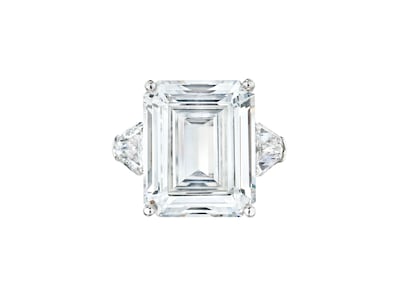
The composition of Finnegans Wake was as long and convoluted as the text itself. Following a year hiatus after writing Ulysses, Joyce began his final novel, which took 17 years to conclude and was published in 1939. Noted as one of the most difficult works of fiction in the Western canon, it has been lauded as “a great comic vision, one of the few books of the world that can make us laugh aloud” by English writer and composer Anthony Burgess, with noted literary critic Harold Bloom deeming it a masterpiece.
“The annotated typescripts are sections of the third chapter of the second book typed in black ink with Joyce’s autograph ink additions and two genealogies of ‘Finn’ on two separate sheets,” the catalogue notes state, and contain further revisions and corrections in the hand “of either Joyce or more likely one of his amanuenses working on his instructions” (£45,000-£55,000/€51,010-€62,359).
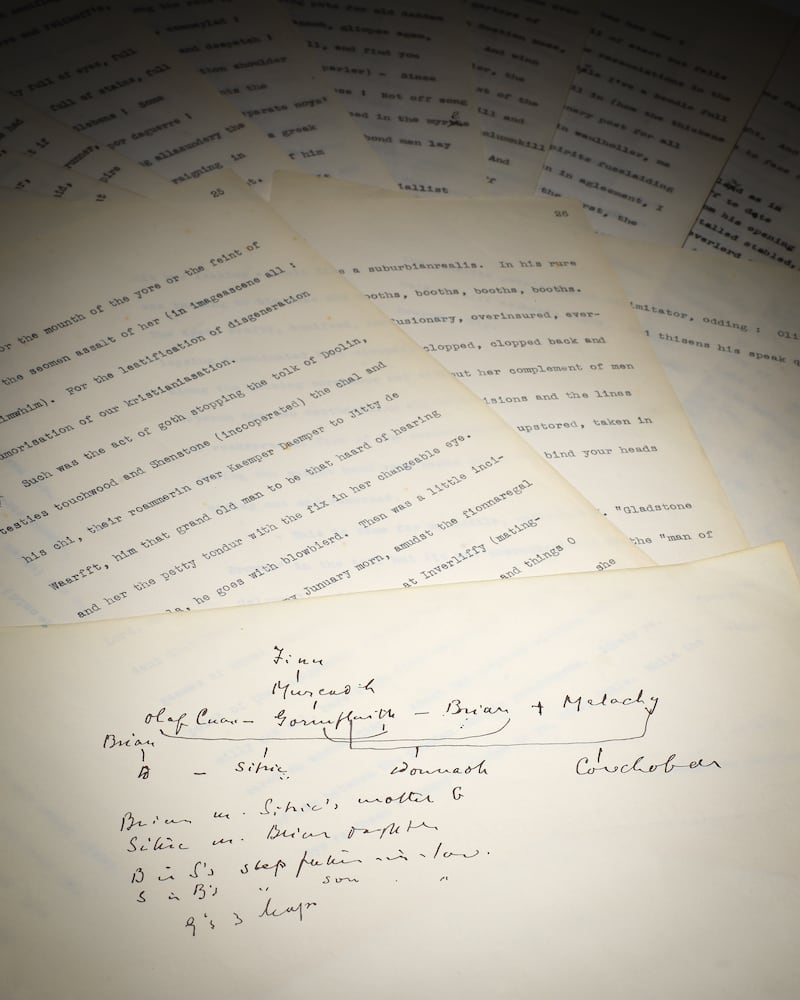
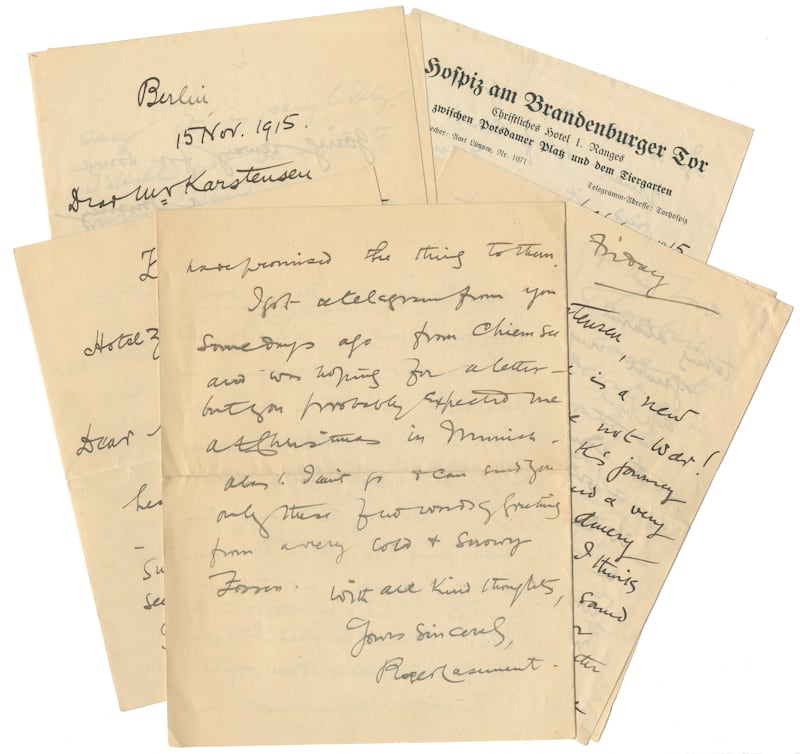
Of further Irish interest in Bonham’s sale, is a series of six unseen and unpublished autograph letters signed by Roger Casement to Max W Karstensen (special correspondent) of the Münchner Zeitung dated November 6th, 1915 to March 6th, 1918, with supporting material.
Often called the “father of 20th century human rights”, these documents correspond to Casement’s time in Germany, when he tried to assemble an Irish brigade in the country and they underline his desire for a peaceful solution to the situation in Ireland.
“Peace not War! It is really against my grain to appeal to England – or to admit there is a better England. But it does exist ... if only we get Englishman to see that the criminals are Asquith, Grey & Co there might be hope of sanity coming again.”
A month after the last letter was written Casement returned to Ireland on a German U Boat with the intention – according to Karstensen – of dissuading the republican leadership of going ahead with the Easter Rising, as he was convinced that the lack of German support would lead to failure. He was then arrested, sent to London, tried for treason, sentenced to death and stripped of his knighthood.
Commenting on the papers, Kieran O’Boyle of Bonhams in Dublin said: “These are fascinating letters which highlight Casement’s suspicions of German good faith and frustrations at his lack of progress. Equally interesting is Karstensen’s letter, which paints Casement as an easily manipulated almost childlike figure, whose only interest was to secure Germany’s good intentions towards Ireland in the event of victory in the war. This view both underplays Casement’s significance and misrepresents his character.” (£4,000-£6,000).
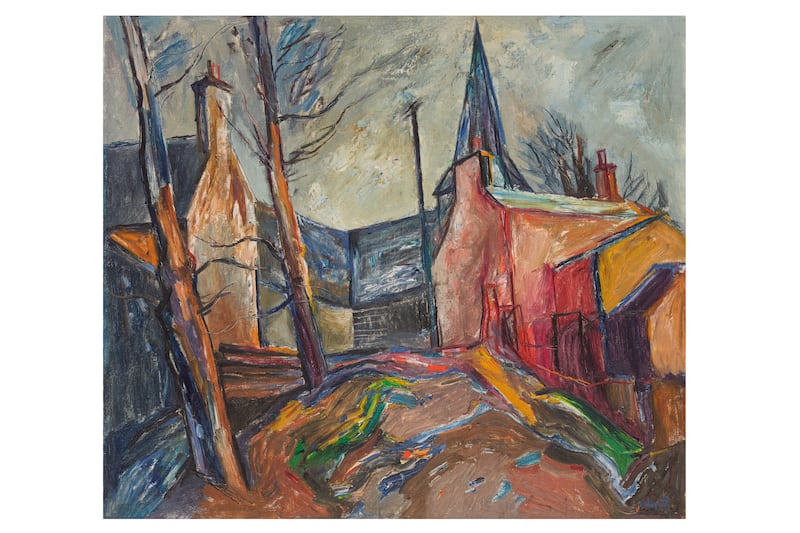
“An important Ardglass painting by Colin Middleton” will feature at Chiswick Auctions in London, also on March 29th. The Steps, Ardglass was painted in 1949 and commemorates the summer the artist spent in the coastal fishing village. He had received a stipend of £40 a month from dealer Victor Waddington in advance of sales and this allowed the artist to make a decisive move from his previous career as a textile designer (£12,000-£18,000).
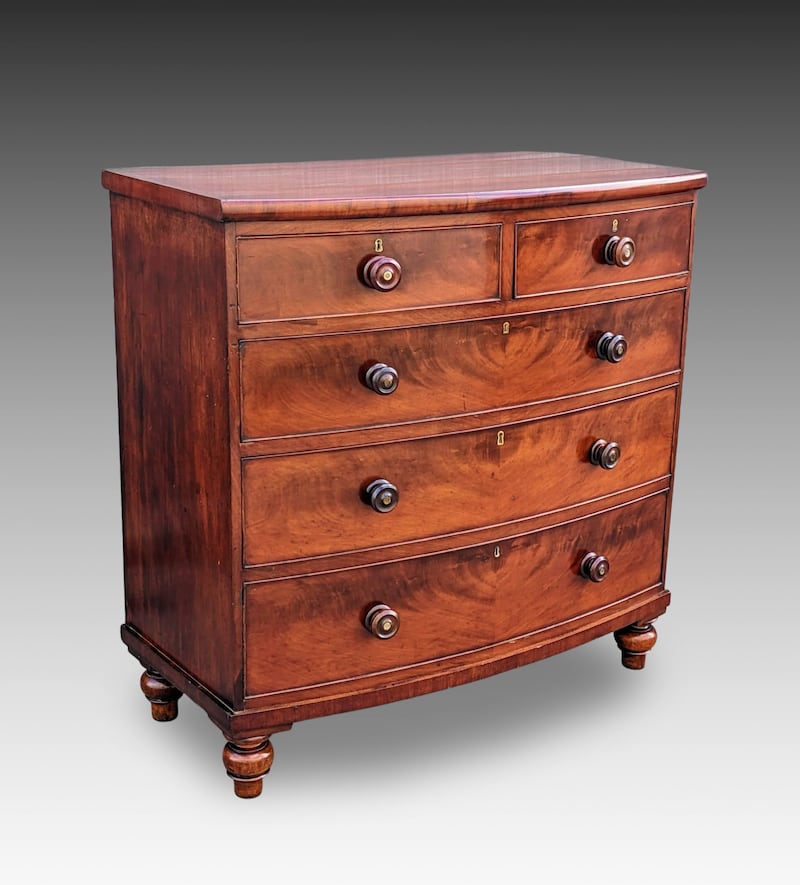
Highlights from Hegarty’s of Bandon Blue Room live online sale on March 29th include an eclectic mix of furniture, jewellery and silver include rings by Tiffany and a good quality William IV bow fronted chest of drawers in patinated flame mahogany (€500-€800).
Finally, on Tuesday, March 28th, SCOOP’s Outside the Box Art Auction will take place at the Royal Hibernian Academy in Dublin. The charity auction has works by some of Ireland’s best street and contemporary artists to be auctioned for youths who are displaced.















